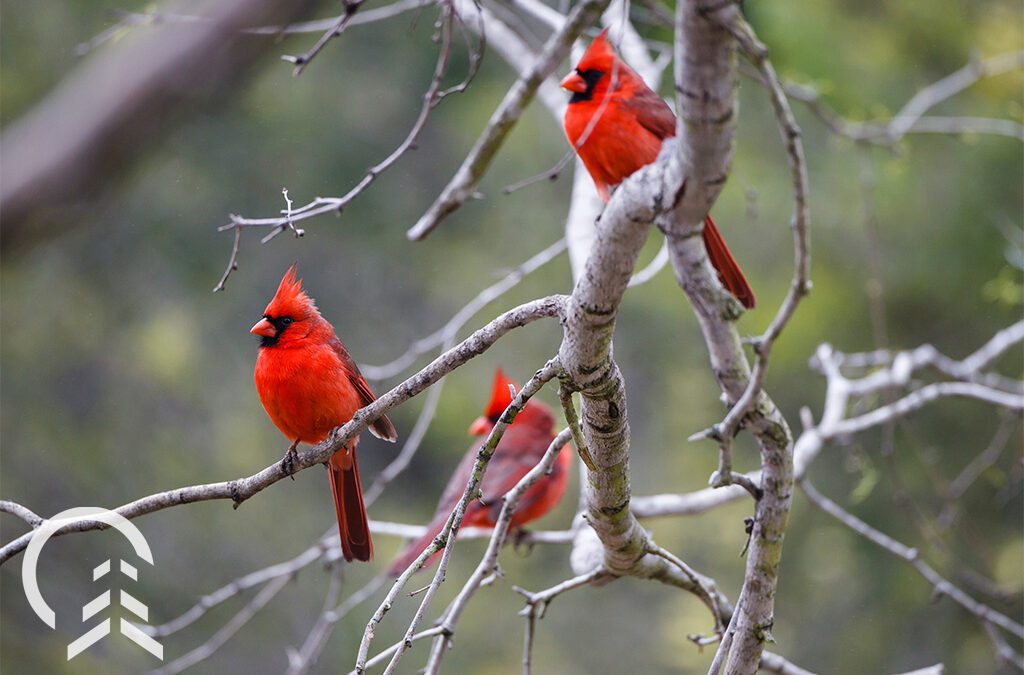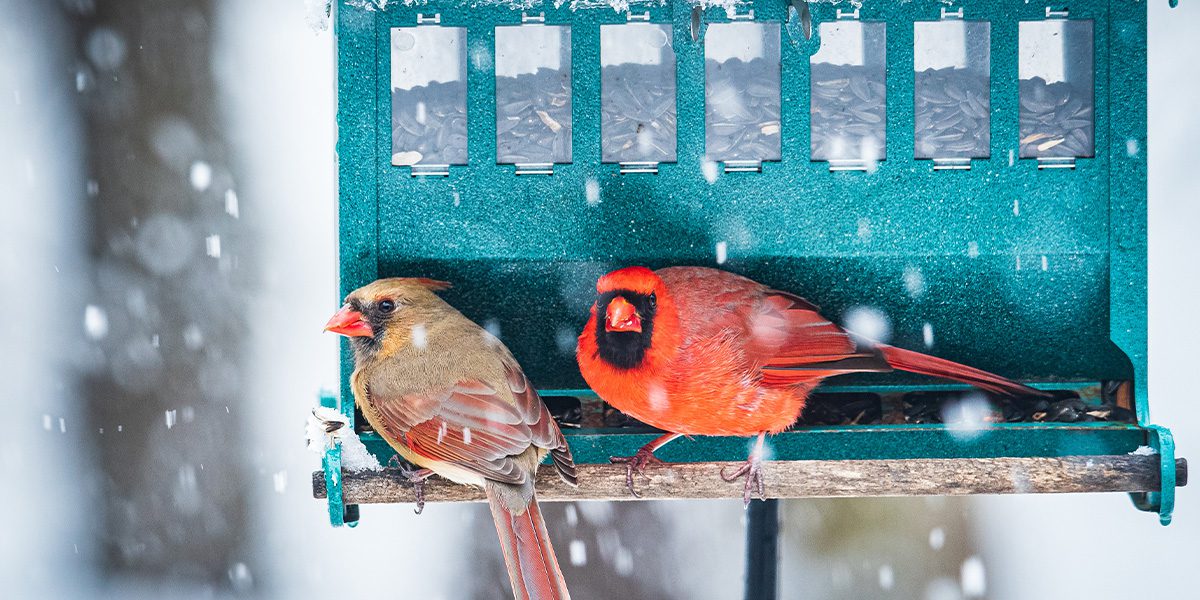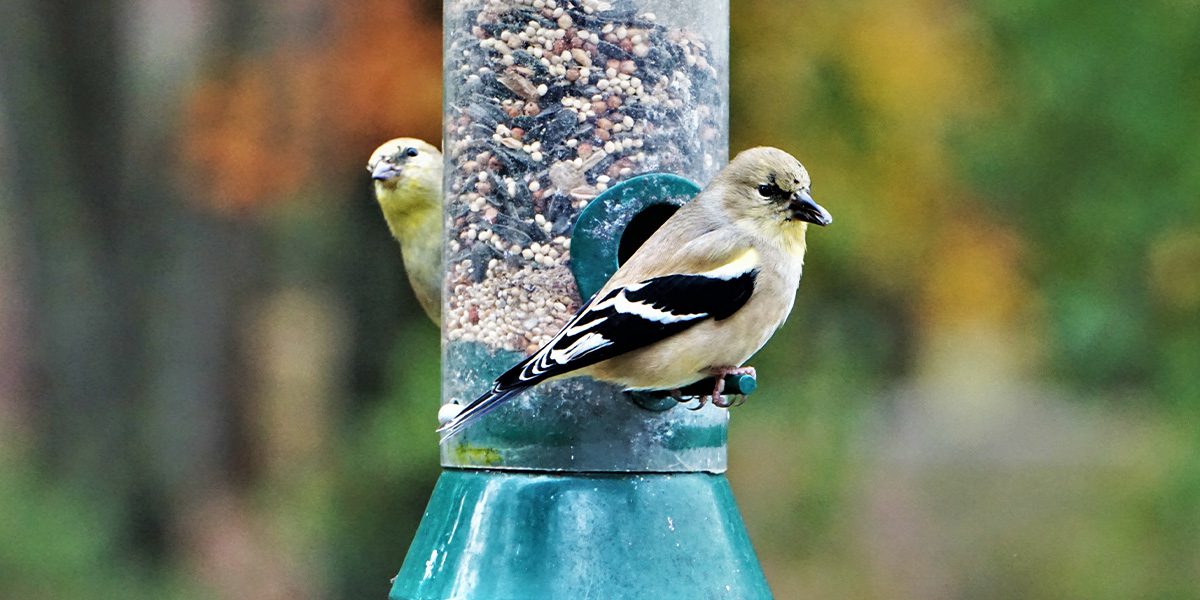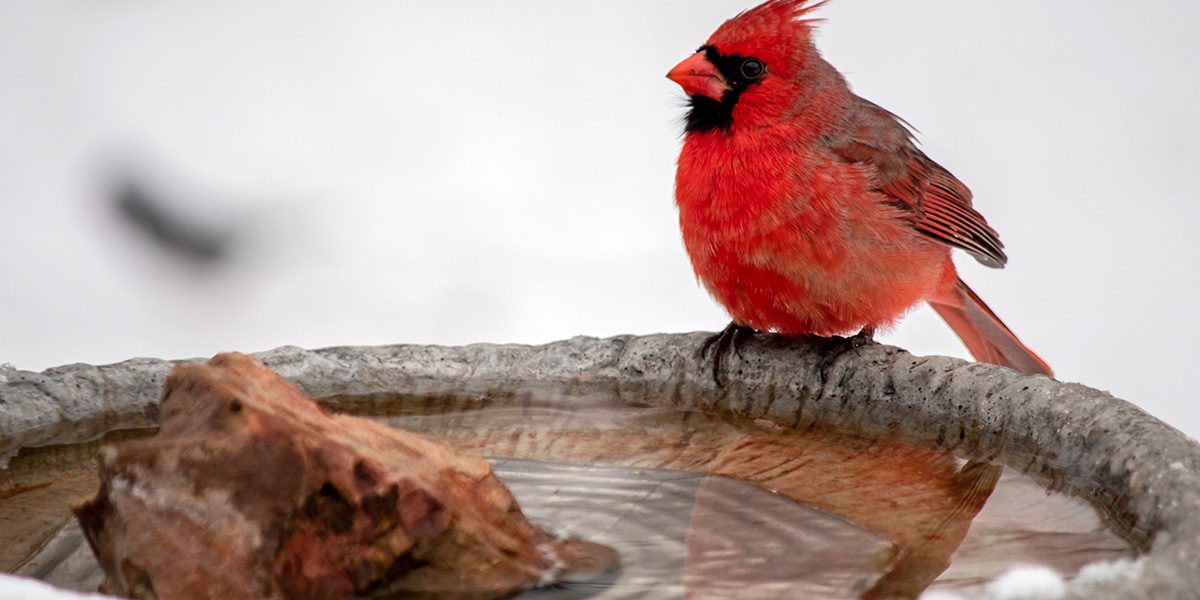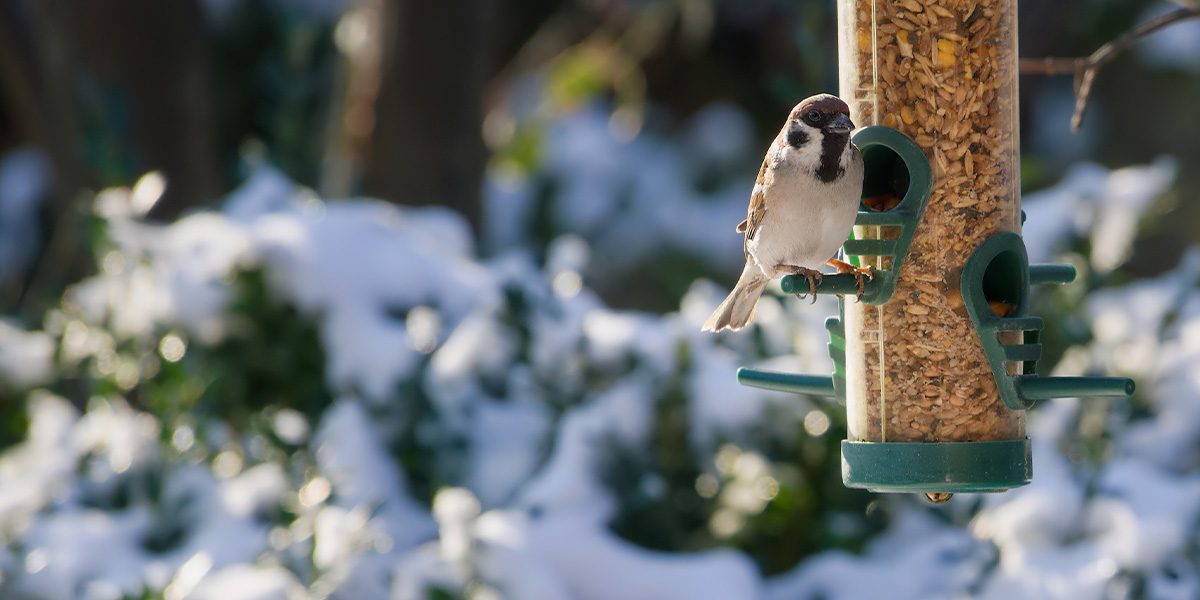Attracting birds over the long term involves slowly transforming your landscape into a thriving, bird-friendly habitat, complete with the plant varieties they rely on for food and shelter.
Feeding the wild birds in your neighborhood is a great way to form a relationship with them. If you do it right, you can provide them with high-quality food during the coldest part of the year, making your yard a part of their daily route. Here are the essential do’s and don’ts of winter bird feeding, including advice on the best seeds, placement, maintenance, and more!
1. Feathered Friends: Identifying Local Winter Birds
Identifying and observing the native bird species that visit our backyards can be an incredibly rewarding daily or weekly practice. During a Chicago winter, the Northern Cardinal visits us with its brilliant red plumage, a stunning contrast against the snow-covered backdrop, while dark-eyed Juncos, small and gray, are like winter’s ballet dancers as they hop and flutter about. You should also keep an eye out for the energetic Black-Capped Chickadee, its distinctive black cap and cheerful song adding a touch of winter magic to our Chicagoland landscapes. The American Goldfinch, which, though not as flashy, still sports a subtle charm with its olive-brown feathers. House sparrows, Pine Siskins, Nuthatches, Blue Jays, and American Tree Sparrows are other common visitors.
2. The Best Bird Feeders for the Chicago Area
Not all birds feed the same way: some like to eat off the ground, while others prefer to browse trees, shrubs, and cones for seeds. Understanding how different birds like to eat helps us create a diverse offering of feeders that caters to many different species. Here are the feeding preferences of a few common birds native to Illinois:
Northern Cardinal
Preferred Feeder Type: Platform feeders or tray feeders.
Cardinals are ground feeders by nature, and they prefer a flat surface where they can easily perch and access seeds, making platform or tray feeders the perfect options for them.
Black-capped Chickadee
Preferred Feeder Type: Hanging feeders or tube feeders.
Chickadees are agile and acrobatic birds, meaning they’re comfortable clinging to the sides of hanging feeders or perching on smaller perches found on tube feeders.
American Goldfinch
Preferred Feeder Type: Tube feeders with small perches.
Goldfinches are small and lightweight, and they prefer feeders with perches suitable for their size. Tube feeders with small openings prevent larger birds from dominating the feeding space, ensuring these beauties get a spot at the table.
Dark-eyed Junco
Preferred Feeder Type: Ground feeders or platform feeders.
Juncos typically forage for seeds on the ground, so they prefer lower-lying feeders. A platform feeder near shrubs or low-growing trees provides an ideal feeding spot for these ground-loving birds.
3. Do’s and Don’ts of Winter Bird Feed
Black-oil sunflower seeds are the healthiest and most loved food for a variety of winter bird species, with nyjer seeds, often referred to as thistle seeds, coming in at a close second. Raw, plain peanuts are another healthy choice and are a favorite of larger birds. Suet, a mixture of animal fat and other ingredients, is a winter superhero, providing the essential fats that many energetic bird species need to combat the cold.
Steer clear of seed mixes containing fillers such as milo, barley, wheat, and cracked corn. At best, these go untouched and create unnecessary waste. At worst, they provide empty calories and unhealthy food for our beloved birds.
4. Do’s and Don’ts of Using a Bird Feeder
Properly placing and maintaining your bird feeders is crucial for a successful winter bird buffet. Here are some essential tips to follow:
- Keep your feed mold-free by sheltering it from moisture, regularly replacing any seeds that have been exposed to water, and cleaning your bird feeder before refilling it.
- Strategic feeder placement is key. Situate them in areas where your feathered visitors will have clear sightlines to help them dodge potential predators coming from the sky, ground, or trees.
- Squirrel-proof your setup with specialized baffles, or choose feeders specially designed to outsmart these acrobatic thieves. These precautions help you avoid any unwanted furry guests, ensuring your feast is exclusively for the birds!
5. Winter Bird Bath Tips
Birds need water in the winter, too, so installing a heated bird bath in your yard will go a long way toward helping our feathered friends during Chicago’s colder months. Fresh, liquid water is a rare gem in winter, meaning your backyard will become the neighborhood hub for local birds in no time. Just remember to clean it and replace the water regularly to keep everyone healthy.
6. Shelter Boxes for Winter Birds
Shelter boxes, also known as birdhouses or nesting boxes, offer local birds warm places of refuge during extreme cold. These boxes help birds conserve energy, so they don’t need to spend it on staying warm or finding alternative shelter. Additionally, shelter boxes serve as valuable nesting sites during the breeding season. The design and placement of your shelter boxes are key factors; they should be appropriately-sized for the target species and positioned in a sheltered location, away from prevailing winds.
7. How to Create a Bird Haven Over the Long Term
Bird feeders, shelter boxes, and bird baths all provide valuable resources for native birds during the winter. However, attracting birds over the long term involves slowly transforming your landscape into a thriving, bird-friendly habitat, complete with the plant varieties they rely on for food and shelter. Here are a few ways you can boost your bird-friendly backyard in the next year:
- Native Plantings: Opt for native plants in your landscaping, as they provide familiar food sources and shelter for local bird species. Native plants are adapted to the region’s climate and also support a variety of insects, which act as food sources that attract even more birds.
- Layered Vegetation: Develop a layered vegetation structure in your yard by incorporating trees, shrubs, and groundcovers. This structure mimics the natural habitat of local birds, offering them various levels of perching, foraging, and nesting opportunities.
- Leave Seed Heads and Leaves: Before you deadhead your flowers and rake your leaves, remember that these “messes” are important food sources for many local bird species. They also provide valuable habitat for insects, which are another valuable food source for many birds.
- Use Eco-Friendly Practices: Strive to use eco-friendly practices as much as possible in your gardening, and minimize the use of pesticides and herbicides in your yard. These chemicals can harm local bird populations both directly and indirectly by reducing insect populations, a crucial food source for many bird species.
- Education and Advocacy: Share your knowledge and enthusiasm for bird-friendly practices with your neighbors and other community members to encourage the creation of bird-friendly spaces on a larger scale and advocate for policies that support bird conservation in your area.
For more advice on the do’s and don’ts of winter bird feeding, please come visit us at our garden centers in Bloomingdale and Carpentersville!
Platt Hill Nursery is Chicago’s premier garden center and nursery.

